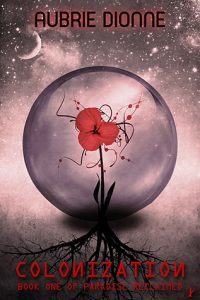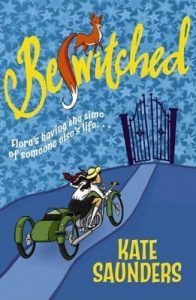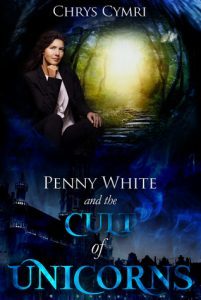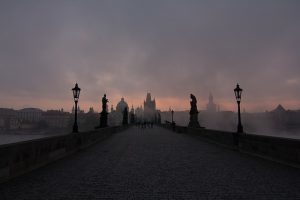Elise Edmonds's Blog
April 21, 2021
Where Secrets Lie is Published!
Threat of war looms over Kamikan …
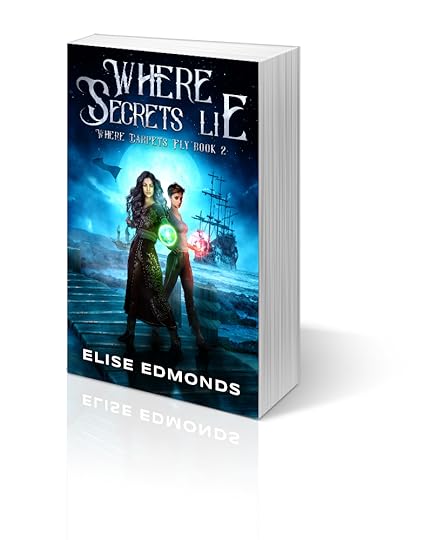
Elina, a skilled teen mind-reader, struggles when her power goes haywire. With racial tensions escalating, and a rocky relationship with Pallexi boyfriend Janni, will her foray into surveillance work bring the answers she needs?
Kara, ex-Pallexi prisoner, lives in hiding. She seeks relief in poppy tea and drifts into addiction, but her worst nightmares come true when a spy discovers her family. A secret mission could be her route to revenge. Will Kara’s reckless actions ease her wounded past, or will she live to regret it?
Simeon, committed undercover aid-worker, can’t ignore the call of military life. But further trials await Simeon as he attempts to bond with his rowdy comrades, knowing their lives will depend on it. When it comes to the ultimate test, does he have the guts to hold up under fire?
Three friends—torn apart by the war. With the fate of their country at stake, will their lives ever be the same again?
Friendships are tested and secrets come to light in this fantasy adventure sequel to Where Carpets Fly.
The post Where Secrets Lie is Published! appeared first on Magic Writer.
March 20, 2021
Where Secrets Lie – Cover Reveal!
Cover Reveal Day is finally here! I am excited to share the cover for Where Secrets Lie, with many thanks to Deranged Doctor Design for their work:
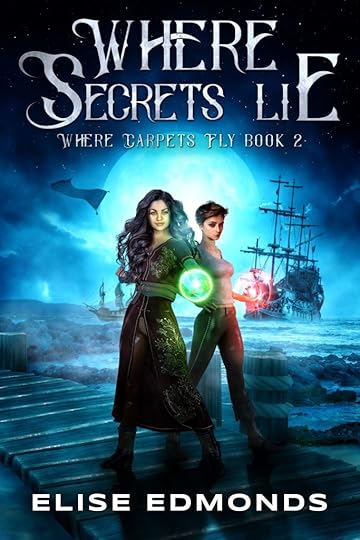 Friendships are tested and secrets come to light in this fantasy adventure sequel to Where Carpets Fly.
Friendships are tested and secrets come to light in this fantasy adventure sequel to Where Carpets Fly.
The post Where Secrets Lie – Cover Reveal! appeared first on Magic Writer.
March 11, 2021
Where Carpets Fly is Republished!
Where Carpets Fly is now available on Amazon with its shiny new cover, in both paperback and e-book!
And stay tuned later in the month for exciting news about the sequel!
The post Where Carpets Fly is Republished! appeared first on Magic Writer.
February 13, 2021
Cover Reveal ~ Where Carpets Fly Relaunch!
I’m excited to share my new cover for Where Carpets Fly! It will shortly be available on Amazon, with thanks to the lovely people at Deranged Doctor Design who designed it for me.
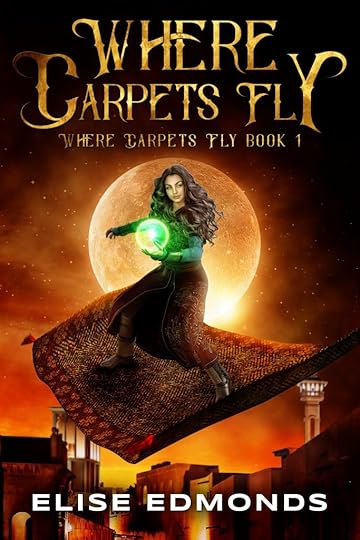 Where Carpets Fly remains the same – but I am pleased to announce that the sequel is on the way and I’ll be announcing more news about that in Spring 2021 – so watch this space!
Where Carpets Fly remains the same – but I am pleased to announce that the sequel is on the way and I’ll be announcing more news about that in Spring 2021 – so watch this space!
The post Cover Reveal ~ Where Carpets Fly Relaunch! appeared first on Magic Writer.
December 22, 2019
2019 Reading Challenge Results!
 Photo by Florencia Viadana on Unsplash
Photo by Florencia Viadana on UnsplashGreetings, one and all! It would appear that an entire year has gone by without a blog post – I’m not entirely sure how that happened! The day job has been very time-consuming in the last year or two, and my mental energy hasn’t been up to the extra writing, blogging and social media, unfortunately. However, I am still here, and as I’ve still been reading this year, I’m going to take the opportunity to update on my reading challenges.
I set my Goodreads challenge to 30 books, which was more of a nominal amount so I could use their tracker. As of today (22nd December) I’ve read 58 books this year, and I’m pretty pleased with that.
I also set myself a specific list of 50 books to read and of that list I’ve read 32, which is 64%. I’m pleased with that, but I do seem to struggle to stick to a particular list as I get distracted by other shiny books along the way, or find a series that I just want to continue.
I’m not going to run through all 58 books here, because that would be tedious, and because as a writer myself, I’d rather focus on the positive side of sharing awesome books I’ve read. So below are my top ten highlights for the year.
10. Percy Jackson – Books 2-5
 The heroic son of Poseidon makes an action-packed comeback in the second must-read installment of Rick Riordan’s amazing young readers series. Starring Percy Jackson, a “half blood” whose mother is human and whose father is the God of the Sea, Riordan’s series combines cliffhanger adventure and Greek mythology lessons that results in true page-turners that get better with each installment.
The heroic son of Poseidon makes an action-packed comeback in the second must-read installment of Rick Riordan’s amazing young readers series. Starring Percy Jackson, a “half blood” whose mother is human and whose father is the God of the Sea, Riordan’s series combines cliffhanger adventure and Greek mythology lessons that results in true page-turners that get better with each installment.
I read the first book last year, and then picked up the whole series on Kindle in a 99p per book deal and figured I may as well keep going. The first book wasn’t bad, although seemed a little formulaic in terms of the hero’ journey – there was a lot of travelling and finding a monster, beating the monster, and continuing the journey. Books two and three were similar, and I nearly quit after book three, as that seemed rather tired. However, I did keep going and thought book four was excellent and book five a good end to the series. A fun adventure series but overall probably has more interest for kids than adults as can be repetitive.
9. Colonization
Finding a new home has never been so dangerous. Andromeda has spent all seventeen years of her life aboard a deep space transport vessel destined for a paradise planet. Her safe cocoon is about to break open as Paradise 21 looms only one month away, and she must take the aptitude tests to determine her role on the new world and her computer assigned life mate.
This book was quite an original sci-fi dystopian mix, with some of the usual YA tropes in it. It was a mix of discovering life on a new planet together with the romance (kind of a love triangle) of the main character. It had good pace, and the situations and characters made for a fun read, with an intriguing mystery element.
8. Iron and Magic
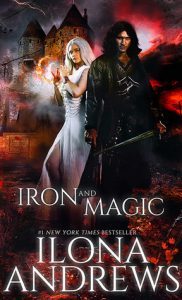 Hugh d’Ambray, Preceptor of the Iron Dogs, Warlord of the Builder of Towers, served only one man. Now his immortal, nearly omnipotent master has cast him aside. Elara Harper is a creature who should not exist. Her enemies call her Abomination; her people call her White Lady. Tasked with their protection, she’s trapped between the magical heavyweights about to collide and plunge the state of Kentucky into a war that humans have no power to stop. Hugh needs a base, Elara needs soldiers. Both are infamous for betraying their allies, so how can they create a believable alliance to meet the challenge of their enemies?
Hugh d’Ambray, Preceptor of the Iron Dogs, Warlord of the Builder of Towers, served only one man. Now his immortal, nearly omnipotent master has cast him aside. Elara Harper is a creature who should not exist. Her enemies call her Abomination; her people call her White Lady. Tasked with their protection, she’s trapped between the magical heavyweights about to collide and plunge the state of Kentucky into a war that humans have no power to stop. Hugh needs a base, Elara needs soldiers. Both are infamous for betraying their allies, so how can they create a believable alliance to meet the challenge of their enemies?
I tried the Kate Daniels series by this author, and decided it was a tad too gory for my taste. I was a little hesitant about giving this one a go, but in the end enjoyed it a lot. There is some violence, but not quite as much as Kate Daniels. The magic/tech mix in this novel is intriguing and there was great chemistry between the two lead characters. I do enjoy a good love/hate relationship dynamic though.
7. The Magicians
 Quentin Coldwater is brilliant but miserable. A senior in high school, he’s still secretly preoccupied with a series of fantasy novels he read as a child, set in a magical land called Fillory. Imagine his surprise when he finds himself unexpectedly admitted to a very secret, very exclusive college of magic in upstate New York, where he receives a thorough and rigorous education in the craft of modern sorcery. After graduation he and his friends make a stunning discovery: Fillory is real. But the land of Quentin’s fantasies turns out to be much darker and more dangerous than he could have imagined.
Quentin Coldwater is brilliant but miserable. A senior in high school, he’s still secretly preoccupied with a series of fantasy novels he read as a child, set in a magical land called Fillory. Imagine his surprise when he finds himself unexpectedly admitted to a very secret, very exclusive college of magic in upstate New York, where he receives a thorough and rigorous education in the craft of modern sorcery. After graduation he and his friends make a stunning discovery: Fillory is real. But the land of Quentin’s fantasies turns out to be much darker and more dangerous than he could have imagined.
This is quite a bizarre book. The first half is Harry Potter for adults, and the second half is Narnia for adults. The first half works better than the second half, in my opinion, and was more enjoyable. It felt like a parody for a lot of the time, and yet was an enjoyable enough story in its own right. Although as many reviewers point out, none of the characters are particularly likeable, which doesn’t always help matters. However, it really depends if you can identify with that as to whether you will enjoy it. Quentin, the main guy, is never happy, but somehow I felt an empathy for him despite how annoying he was, and that’s why it ended up being a good book for me.
6. First Year
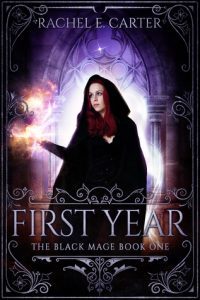 Before the age of seventeen, the young men and women of Jerar are given a choice —pursue a trade or enroll in a trial year in one of the realm’s three war schools to study as a soldier, knight, or mage…
For fifteen-year-old Ryiah, the choice has always been easy. Become a mage and train in Combat, the most prestigious faction of magic.
Yet when she arrives, Ry finds herself competing against friend and foe for one of the exalted apprenticeships.
Before the age of seventeen, the young men and women of Jerar are given a choice —pursue a trade or enroll in a trial year in one of the realm’s three war schools to study as a soldier, knight, or mage…
For fifteen-year-old Ryiah, the choice has always been easy. Become a mage and train in Combat, the most prestigious faction of magic.
Yet when she arrives, Ry finds herself competing against friend and foe for one of the exalted apprenticeships.
Another fairly standard magical school set up, but that is a favourite trope of mine so I was keen to dive into this series. The first book was very enjoyable, although I think it lacked on the surprise front, but I liked the characters and the world set up and continued with the second book. The series progressed very quickly, but in the second book the love triangle became a heavy focus and I got bored of that and decided I was done. Still, if you like magical school/apprentice books, definitely recommend giving this one a go. Also, lush cover art.
5. A Manor of Life and Death
 Warring staff. “Accidental” poisonings.Topiary of dubious intent. Throw in the full complement of the Toot Hansell Women’s Institute and dragons doing yoga on the terrace, and DI Adams is starting to wonder if she might have made a small misjudgement signing up for this particular spa weekend in the country. And that’s before the dead body in the sauna and the storm that cuts them off from the rest of the world.
Warring staff. “Accidental” poisonings.Topiary of dubious intent. Throw in the full complement of the Toot Hansell Women’s Institute and dragons doing yoga on the terrace, and DI Adams is starting to wonder if she might have made a small misjudgement signing up for this particular spa weekend in the country. And that’s before the dead body in the sauna and the storm that cuts them off from the rest of the world.
If you enjoy fantasy books and cozy mysteries, you can’t go wrong with the Beaufort Scales series from Kim Watt. They are easy, fun murder mystery reads based around a village Women’s Institute and their dragon friends, which adds an extra dimension to the genre. I’d recommend starting at the beginning of the series, with Baking Bad, and you won’t be able to get enough of tea, cake, dragons and mystery, all in one cozy package.
4. Beswitched
When Flora Fox’s parents send their daughter off to boarding school, they have no idea that the train will take her back to 1935. On the journey Flora has a strange dream. She wakes up without her laptop or her phone, wearing a hideous uniform with ridiculous bloomers underneath. Slowly, she realizes she has gone back in time! But why?
This book is such a fun throwback to the boarding school stories I used to love reading as a kid. The time- travel element chucks in an extra fantasy dimension, which again is right up my street. A quick and easy read, as it is a kid’s books, but I’m dense enough that I didn’t see the awesome twist coming, and it was far more enjoyable as a result! So if you were a fan of Malary Towers or St Claire’s, you’ll enjoy this as a great nostalgia read.
3. Penny White – Books 2- 6
Raven’s ears flicked. ‘Dragons aren’t known for their patience.’ ‘More is the pity, ‘ said the unicorn. ‘Father Penny and I were about to amicably settle our differences. A dragon invading our home vastly complicates matters.’ Five months ago my life was changed forever when I learned about Lloegyr, the sister nation to England on the magical parallel world of Daear. Thrilling rides on Raven, a darkly beautiful search dragon, break up the monotony of my life as the priest of a small village church. Nor are things dull at home, not with a sarcastic gryphon, a snail shark, and my younger brother all sharing my living space.
I read the first book in this series last year (The Temptation of Dragons), and have slowly become hooked on them. There’s something very relatable about the vicar who struggles with everyday life whilst helping other people through theirs. The magical creatures are intriguing, from the awesome snail shark, to the gryphon associate, and the many dragons and unicorns. As the series progresses, a depth comes out in the characters and the situations as relations are strained between the two countries and Penny juggles personal life, government, church life and her dream fantasy world, to try and sort everyone out.
2. The Amulet of Samarkand
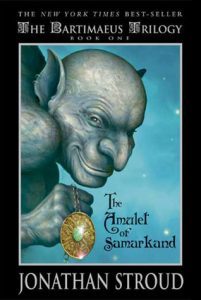 Nathaniel is a boy magician-in-training, sold to the government by his birth parents at the age of five and sent to live as an apprentice to a master. Nathaniel gets along tolerably well over the years in the Underwood household until the summer before his eleventh birthday. Everything changes when he is publicly humiliated by the ruthless magician Simon Lovelace and betrayed by his cowardly master. Nathaniel vows revenge.When he musters the strength to summon the 5,000-year-old djinni Bartimaeus to avenge Lovelace by stealing the powerful Amulet of Samarkand, the boy magician plunges into a situation more dangerous and deadly than anything he could ever imagine.
Nathaniel is a boy magician-in-training, sold to the government by his birth parents at the age of five and sent to live as an apprentice to a master. Nathaniel gets along tolerably well over the years in the Underwood household until the summer before his eleventh birthday. Everything changes when he is publicly humiliated by the ruthless magician Simon Lovelace and betrayed by his cowardly master. Nathaniel vows revenge.When he musters the strength to summon the 5,000-year-old djinni Bartimaeus to avenge Lovelace by stealing the powerful Amulet of Samarkand, the boy magician plunges into a situation more dangerous and deadly than anything he could ever imagine.
This book was recommended on a list of best fantasy books and it did not disappoint. A great read, with original characters and situations, and a great dose of humour. I was hooked on this one from the beginning and the sequels will definitely be on next year’s list.
1. The Final Empire
 Where ash falls from the sky, and mist dominates the night, evil cloaks the land and stifles all life. Criminal mastermind Kelsier teaches Allomancy, the magic of metals, to another Mistborn, urchin Vin 16. The unlikely heroine is distracted by rich Venture heir Elend. Can Kelsier’s thieving crew take on the tyrant Lord Ruler and bring back colour to their world?
Where ash falls from the sky, and mist dominates the night, evil cloaks the land and stifles all life. Criminal mastermind Kelsier teaches Allomancy, the magic of metals, to another Mistborn, urchin Vin 16. The unlikely heroine is distracted by rich Venture heir Elend. Can Kelsier’s thieving crew take on the tyrant Lord Ruler and bring back colour to their world?
Somewhat unusually, I’ve read the Stormlight Archive series to date, which is Sanderson’s epic, and now decided to go back and read Mistborn. I only wish I hadn’t waited so long, as it was an awesome read. I loved everything from the world, the magic system, the characters, to the premise and plotting. Kept me guessing right to the end, and again, the sequels will be on next’s year list. Recommended for any adult fantasy fans.
So, that’s my round-up of a year of reading, and I can’t wait to plan next year. What’s the best book you’ve read this year? Let me know in the comments!
The post 2019 Reading Challenge Results! appeared first on Magic Writer.
December 31, 2018
2019 Reading Challenge

My 2019 Reading Challenge is a list of 50 books. I have a fair amount to still read carried over from last year’s challenge, quite a few of which I actually bought on Kindle but didn’t get around to reading. So I’d like to read those as a priority. I’ve then added a few series continuations, and some non-fiction Christian books for a change.
I will probably set my Goodreads goal to 30 books again. It’s a number I can easily meet, but I like being able to track how many books I’ve read.
My aim is to read the books I already own, and to read some of the books that have been on my list for a couple of years, and not get distracted by too many shiny new books.
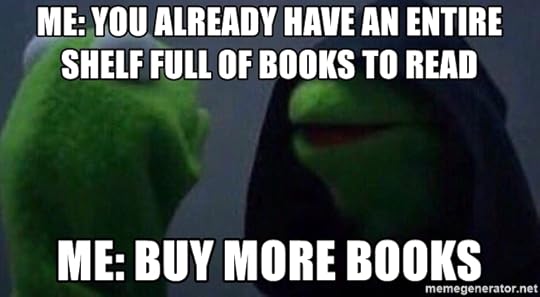
We’ll see how that goes! Here’s the list:
2019 Reading Challenge (50)
Unread Kindle books I own (18):
The Eye of the World – Robert Jordan
Magic Bites – Ilona Andrews
The Magicians – Lev Grossman
The Wrath and the Dawn – Renee Ahdieh
The Final Empire – Brandon Sanderson
Wake – Sherry Rossman
Sufficiently Advanced Magic – Andrew Rowe
Crone – Jeannie Wycherley
First Year – Rachel E Carter
The Princess Bride – William Goldman
Aladdin Relighted – JR Rain
Where Loyalties Lie – Rob J Hayes
The Girl on the Train – Paula Hawkins
Spice Bringer – HL Burke
The Banished of Muirwood – Jeff Wheeler
Iron and Magic – Ilona Andrews
Rebel of the Sands – Alwyn Hamilton
A Monster Calls – Patrick Ness
Unread Real books I own (5):
A Wizard of Earthsea – Ursula K Le Guin
The Skeleton in the Closet – MC Beaton
Girl with a Pearl Earring – Tracy Chevalier
A Darkness of Dragons – SA Patrick
Rotherweird – Andrew Caldecott
Continuations of series I’m currently reading (7):
Red Seas under Red Skies – Scott Lynch (Gentleman Bastards #2)
The Republic of Thieves – Scott Lynch (Gentleman Bastards #3)
Hero – Laura Frances (Slave #2)
Skybreaker – Kenneth Oppel (Matt Cruse #2)
The Cult of Unicorns – Chrys Cymri (Penny White #2 )
The Thief Who Spat In Luck’s Good Eye – Michael McClung (Amra Thetys #2)
A Drake to Diet – KM Carroll (Draconic Mysteries #2)
Books from previous challenge not yet purchased (17):
Cat’s Cradle – Kurt Vonnegut
The Book of Three – Lloyd Alexander
The Amulet of Samarkand – Jonathan Stroud
The Power – Naomi Alderman
Hades Daughter – Sara Douglass
Bloodlines – Richelle Mead
Ella Enchanted – Gail Carson Levine
Peter and the Starcatchers – Dave Barry
The Fire Rose – Mercedes Lackey
The Library at Mount Char – Scott Hawkins
Colonization – Aubrie Dionne
The Girl who Drank the Moon – Kelly Barnhill
Bitter Greens – Kate Forsyth
Redemption – Tora Moon
The Hidden Stairs and the Magic Carpet – Tony Abbott
The Desert of Souls – Howard Andrew Jones
A Thousand Nights – EK Johnston
Christian Non-fiction (3):
Called to Create: A Biblical Invitation to Create, Innovate, and Risk – Jordan Raynor
A Year of Biblical Womanhood – Rachel Held Evans
In His Steps – Charles M. Sheldon
Wish me luck with my next year of reading!
The post 2019 Reading Challenge appeared first on Magic Writer.
December 28, 2018
2018 Reading Challenge Results!
This year I set myself two reading challenges. The first was a list of specific books, mainly fantasy, which you can view here on Goodreads: 2018 Reading Challenge. The list consists of 57 books. In my last update at the end of July, I had read 15 of them. I have now completed another 10, bringing my total to 25. Challenge 44% complete. Not a great showing. I will be adding the remaining books to next years challenge.
I also set myself a Goodreads challenge of 30 books, which I exceeded. During the year, I read a total of 58 books, so 25 challenge books and 33 non-challenge books. I purposely set a low Goodreads goal in order to stop myself avoiding some of the longer books on my list!
My favourite books of the year were (in no particular order):

Wool and Vox are both dystopians. Pemberley: Mr Darcy’s Dragon is a fun series based on the premise of Pride and Prejudice with dragons. The Thief who Pulled on Trouble’s Braids is a past winner of SPFBO, an indie fantasy book competition, and The Thief of Always is a great children’s read.
Finally, here are some brief reviews of the challenge books I read since my last update:
The Old Man and the Sea – Ernest Hemingway.Very dull, DNF. I was warned I might do better to switch it out, so I wasn’t surprised. I didn’t even think it was particularly well-written which did surprise me, because people always say how wonderful Hemingway’s writing is.
The Book of Dust – Philip Pullman. Mediocre – which was disappointing. Read very much like a prologue stretched out into a novel. I supposed that’s the risk you run when trying to follow up an awesome series though.
Harry Potter and the Cursed Child – John Tiffany. Another disappointment. It was passable, but definitely read like bad fan fiction in places.
Shift & Dust – Hugh Howey. The sequels to Wool. I enjoyed these a lot, although not as much as the first book. I think it’s hard to write a good dystopian trilogy because later books lack the impact and wow moments. In the last book, the premise started to fall apart when it’s more closely examined, and certain things were left open-ended which annoyed me.
Words of Radiance & Oathbringer – Brandon Sanderson (Stormlight Archives #2 & #3). Epic sequels. Very enjoyable. Together I think they clock up nearly 2,500 pages so not for the fainthearted. I’d definitely recommend the Stormlight series but only for epic fantasy fans.
Assassins Apprentice – Robin Hobb. A solid fantasy read, but lacked pace and plot focus – typical for novels of its time. Enjoyable.
Senlin Ascends – Josiah Bancroft. Another SPFBO winner. Although it screamed steampunk to me, which is more sci-fi than fantasy. Unique premise, and worth a read.
The Aeonians – JE Klimov. A fun young adult fantasy read with a diverse cast of characters and races.
So, that’s the year’s reading round up done. Stay tuned for a post with my 2019 reading challenge.
The post 2018 Reading Challenge Results! appeared first on Magic Writer.
November 17, 2018
Book Review: The First Story
 The First Story by C. Bradley Owens
The First Story by C. Bradley OwensFantasy
Matt lives to write stories. And those stories might be the only thing keeping his best friend alive after school bullies brutally attack him for being gay. At the side of John’s hospital bed, Matt weaves together tales in the hopes of waking him from his coma before it’s too late…
Storytelling itself comes to life in the world of Creativity. When unexpected changes cause chaos there, personified character archetypes known as Aspects must find the source before everything they know is lost. They suspect that someone has stolen the most powerful thing in all of Creativity: the First Story. But who is powerful enough to wield it?
Follow the Aspects as they journey through an ever-changing series of folktales, ghost-stories, tragedies, comedies, classic fantasy, and modern science fiction to piece the clues together. If the Aspects cannot trust in reality—or even their own memories—can they work together to find the thief and restore their world?
WHY I CHOSE THIS BOOK
I received an Advance Review Copy from the publishers. The honest opinions in this review are all my own and are given voluntarily.
RATING/CONTENT
I give this book 4 out of 5 stars.
This book has been rated as suitable for age 14+ by the publishers A4A Publishing. Visit their content rating page for more information.
It’s appropriate for any adults, and involves a contemporary world setting in a hospital, intermixed with a fantasy world setting. The book includes some violence and has LGBT themes.
GOOD POINTS
This is an intriguing fantasy read framed by a contemporary story set in the real world. When John is beaten up and ends up in a coma in hospital, Matt uses the stories they had begun to create together as a device to wake John up.
The framing story manages to paint a picture of John’s non-acceptance by his family in a subtle way, despite rarely moving out of the hospital. In many ways, this book reminds me of a grown up version of The Never Ending Story (of which I have only seen the movie, not read the book). The fantasy story is a device used by Matt to sort out his real world problems. Like The Never Ending Story, Matt’s characters go on journey in order to find out who is destroying their world and how it can be stopped. As the story progresses, Matt uses the story of the fantasy world to set his own head straight and deal with John’s coma.
The fantasy story is very inventive. It takes us on an epic journey, meeting multiple characters who make up the realm of Creativity (which is basically Matt’s created fantasy world). The characters each have various stories, but they interact outside of these stories as Aspects or Elements. These Aspects band together when they tell their stories and find changes being made. Why are their stories being changed, by whom, and for what purpose?
There’s a huge mix of different types of characters, from The Growl in the Night, to the Puppeteer (basically Pinocchio), Frau Hiver (a scary ghostly lady), to Baba Vedma (a grumpy elderly woman) and many others. These are not the typical groups of characters you would pick to represent fantasy worlds, and this makes the story come over as very original.
As the story draws to a close, the two plots draw closer and come to a satisfying conclusion. I’m a sucker for good endings, and this one ticked all the right boxes for me. I won’t say more, because I hate to give spoilers, but it’s definitely worth the ride.
BAD POINTS
Whilst I enjoyed this book a lot, I have to say it was a bit of a slow burn. Because we’re introduced to a lot of different stories relating to the fantasy characters to start with, it took me a while to get into it. So give it a chance. It took me to about the 25% mark before I had a strong grip on all the characters and the fantasy world plot. All the little stories made it feel a tad disjointed at first.
The fantasy plot relating to the First Story itself is a little vague. It works on what I’d call a soft magic system, where magical things happen rather than being explained explicitly. You have to accept this is the case and go with the flow to enjoy the book.
I’d have liked a little more background to Matt and John, perhaps flashbacks to earlier in their lives, to get more of a grip on what John went through on a daily basis and how it affected Matt. The framing story got over what it needed to well, but felt a little thin at times in terms of detail and getting to know the characters, especially as John was in a coma for most of it.
OVERALL
This is a well-written original novel with a style all its own. You know they say writers shouldn’t use adverbs? C Bradley Owens throws that out the window and owns it. Once you get used to the slightly lyrical style, and the dreamlike nature of some of the sections, you’ll enjoy where the book goes. I recommend it to people who enjoy both fairy-tale style fantasy and fantasy with a modern twist.
The post Book Review: The First Story appeared first on Magic Writer.
October 27, 2018
Secrets in Our Cities Scavenger Hunt Blog Tour: Interview with Madison Wheatley
Welcome to the next stop on the Secrets in Our Cities Scavenger Hunt Blog Tour! I’m delighted to be hosting Madison Wheatley, one of the amazing authors of this upcoming paranormal urban fantasy anthology. Read on for her interview!
Elise: What’s your story about?
Madison: My story is essentially a “buddy cop” story set in an urban fantasy environment. Talisa Joyce is the only one in her family who can’t do magic. Andrew Yataro is a gifted mage. Together, they investigate the magical crimes in Silvercoast City. But when a missing person investigation goes awry, Detective Joyce finds herself in an uncomfortable position: It’s up to her to take down a powerful enemy and rescue her partner from a magical trap.
Elise: Sounds good! What inspired your story?
Madison: I’m a big fan of stories about magic concealed in mundane surroundings. The idea that anything–an abandoned building, a mysterious stranger, a dark alley–could contain unexpected some power, intrigues me. This fascination fueled the creation of Silvercoast City, a place where the magical and the mundane coexist, and occasionally bump up against each other.
As much as I enjoy infusing magic into everyday surroundings, I also love stories in which an “ordinary” hero saves the day. Like Talisa, I have struggled with feelings of inferiority, envying others of their talent while disregarding my own. As I’ve gotten older, though, I’ve realized that approach doesn’t lead to happiness in the end. That’s why I included a character who learns to thrive in a magical world, using her own wits and collaborating with her mage partner to overcome obstacles.
Elise: What was the hardest part of writing it?
Madison: The biggest challenge of writing any fantasy is ensuring that the world comes off as real. This means making sure there are no inconsistencies, especially when the rules of magic are concerned. The fun thing about fantasy is that anything is possible, but at the same time, mistakes and plot holes can take the reader out of the narrative.
Elise: Have you written a story for any other JL anthologies?
Madison: This is my first JL anthology! It’s been a great experience, though, and I’d love to be part of another one in the future.
Elise: Do you prefer an HEA? (Happy Ever After)
Madison: I don’t think every story necessarily need to end happily ever after; after all, important life experiences don’t end in sunshine and rainbows. However, I don’t enjoy reading stories with entirely hopeless endings either. Even sad endings can include some kind of light, a hint of hope that things may get better after the story’s end.
Elise: I agree with that–I like a sense of hope even if it’s not a happy ending. How do you combat writer’s block?
Madison: I’m a big fan of freewriting. I’ll set aside a few minutes and word-vomit on a topic or a tricky plot point. In addition, taking a break to read a book or watch a movie/TV show can help clear writer’s block; in fact, oddly enough, a major character development in “Gallery of Lost Souls” was inspired by a character on Arrested Development. (I’d go more into detail on this, but I can’t because spoilers.)
Elise: Are you a “pantser” or “plotter”?
Madison: I’ve been both throughout my writing life. It usually depends on the project. When it comes to shorter projects, like “Gallery of Lost Souls,” I’ll start with only a basic premise and a few plot points. However, the novel I’m working on started with a more detailed outline. Overall, I see the benefits of both pantsing and plotting, and I’m sure I’ll keep switching between the two methods until I know which one works best for me.
Elise: Favorite urban fantasy novel/series?
Madison: I’m really enjoying The Hazel Wood by Melissa Albert. It’s got the right balance of magic, mystery, and suspense that keeps me turning the pages.
Elise: If you could meet one author, alive or dead, who would it be?
Madison: Definitely Neil Gaiman. I love his unique writing style, and he’s got so much wisdom as far as writing advice goes.
Elise: What is your non-writer alter-ego?
Madison: I’m a houseparent and English teacher at a residential treatment center for adolescents. My job can be demanding, but I enjoy watching them “geek out” over the books they’re reading.
Elise: Who is the biggest supporter of your writing?
Madison: My husband has supported my writing ever since we were in high school. He still keeps some of my old work and looks over it from time to time. In addition, my local writing group has been a huge help. They help me iron out tricky plot points and celebrate my successes with me.
Elise: What is the biggest obstacle to your writing?
Madison: Definitely distraction. Sometimes I can be so busy that it’s hard to slow down and make time for writing.
Elise: Distraction is a problem for me too! What other projects are you working on?
Madison: I’m currently gearing up for NaNoWriMo 2018. I’m still in the planning stage, but I know I want to write a YA contemporary fantasy. In addition, I’m (slowly) revising my psychological thriller novel “Ambrosia,” which I’m hoping to start querying later this year or early next.
Elise: Oxford comma, yes or no?
Madison: 100% YES. Don’t even get me started on my love for the Oxford comma. Instead of going on a long tirade, though, I’ll just include this link. https://www.nytimes.com/2017/03/16/us/oxford-comma-lawsuit.html
Elise: True, you can’t go wrong if you put it in! Thanks for stopping by, Madison.

Madison Wheatley
Madison Wheatley is an author and middle/high school English teacher from Northwest Indiana. She enjoys writing genre-blending stories with an element of mystery; her current projects are an urban fantasy crime story and a paranormal psychological thriller novel. Madison enjoys reading, video games, and spending time with her husband and her Mountain Feist.
Follow Madison: Twitter, Instagram, Website
Published works: Seven Deadly Sins, A YA Anthology: Avarice
SCAVENGER HUNT!
This blog post is part of the Secrets in Our Cities Scavenger Hunt. You can participate by visiting all of the participating blogs, a list of which can be found in the introduction post on the Just-Us League’s website.
Make sure to jot down the clue below–it’s an important part of the hunt!
Once you’ve gathered all of the clues, figure out the secret line and submit it. One lucky winner will receive a paperback copy of Secrets in Our Cities, and three lucky winners will receive ebook copies.
The Scavenger Hunt will be open until midnight EST on November 5th, 2018. The winners will be announced on the Just-Us League’s blog on November 7th, 2018. Your information will only be used to contact you if you win a prize.
The post Secrets in Our Cities Scavenger Hunt Blog Tour: Interview with Madison Wheatley appeared first on Magic Writer.
September 30, 2018
Worldbuilding: What Planet Are You On?
 When building a world, one of the first things you will determine is exactly what that world is. It’s the biggest decision you’ll make and may already be determined in advance by your genre or plot. If however, you have a blank canvas, there are various alternatives to consider:
When building a world, one of the first things you will determine is exactly what that world is. It’s the biggest decision you’ll make and may already be determined in advance by your genre or plot. If however, you have a blank canvas, there are various alternatives to consider:
A novel set on planet Earth as we know it may require minimal worldbuilding. If you choose to set the novel in your home town or area, then you probably know the setting well already, or will need to do minimal research. If you are creating fictional towns in a real-world setting, you can probably base them on places you already know. The further afield you go from places you have either lived in or visited, the more research you will need to do. However, if you are writing fantasy, then the accuracy of the locations is entirely up to you. You may choose to emulate the real world completely, or just use aspects of it as a basis for your novel. Real world research may be key to your planning, rather than imagination. If you intend to portray an accurate representation of a place you are not familiar with, you may need to make some travel plans!
If your setting is Earth but from a past time period (and this will apply to historical fiction writers as well as fantasy writers) then you will of course not be able to do research in person. If you wish to emulate a historical period and the accuracy doesn’t concern you, then the Internet and books may well provide all the information you need.
If you choose to write an accurate historical fiction or fantasy, then you may need to delve deeper into your research. Archives, libraries, diaries, speaking to descendants of those who lived or looking at historical records may form part of your research.
Alternative Earth
Alt-history is a branch of Fantasy that takes historical events on Earth and changes them, following up with what happened next as a result. So initially, you would need to research the general historical period and events, following which you need to decide how you are reconstructing your history. Does one small change in circumstances or action mean the path of history completely diverges from the real world? Novels on this basis are commenced by saying “What if x hadn’t done this, but had done y instead.” Does a historical event have a different cause, such as magic or a particular hidden race of Fantasy creatures? One example of this is Scott Westerfelds’ Leviathan series. The books are based around the first World War, but they take certain liberties with the facts and involve the use of alternative scientific and technological advances. Alt-history is imaginative but requires research for a starting point.
Creating your own world is both easier and harder. You have a clean slate to start from and no restrictions. No one can say in your fantasy world, you can’t do such and such, because the entire world is a product of your imagination. However, it’s important to remember that creating a believable world means that you have to follow the principle of internal consistency, and you should have explanations for why events, features, races etc. exist or take particular actions.
You may find that the easiest way to create a fantasy world is to base countries on real world countries or cultures, selecting the aspects you wish and putting your own twist on them. You will also find that your world is more immersive if you follow general laws of climate, physics and behaviour patterns. If your entire novel is explaining your world, you will lose people. The setting should be an enhancement and a background to the character and the plot – not a substitute for them.
 Portal/Multiple Worlds
Portal/Multiple Worlds
You may wish to use multiple worlds. The most common, and probably the easiest way to do this is to have either a wainscot world or a portal fantasy.
In a wainscot world, another society exists within the real world, yet hidden from the real world. Harry Potter would be an example of this, as would classic children’s novel The Borrowers.
Portal worlds involve crossing through a gate or doorway from the real world to the fantasy world. Narnia is a classic example of portal fantasy.
Another way to have different worlds is to have a series of other realms that make up the world as a whole. An example of this would be Rick Riordan’s Magnus Chase series which uses the nine Norse worlds as a basis for the fantasy world, one of which is Earth (Midgard). Some of the worlds are passed through briefly, and because the Norse association is there, the reader already has certain expectations about these worlds which cuts down on the worldbuilding.
Creating multiple fantasy worlds in other dimensions or parallel dimensions is another option. One example of this would be the Chrestomanci series, by Diana Wynne Jones, which has various books set in a multiverse of parallel universes. These worlds split from each other at the time of various important historical events–an event would have different outcomes in each world.
Often, a fantasy writer will choose not to focus on more than two or three worlds in detail, or may refer to others in passing. As worlds increase, so does complexity. I would not suggest creating ten linked worlds simply because it seems like a good idea. If your worlds don’t have a purpose in the plot, you are likely to tie yourself and your readers in knots!
So… what kind of planet are you on? Let me know in the comments.
The post Worldbuilding: What Planet Are You On? appeared first on Magic Writer.

